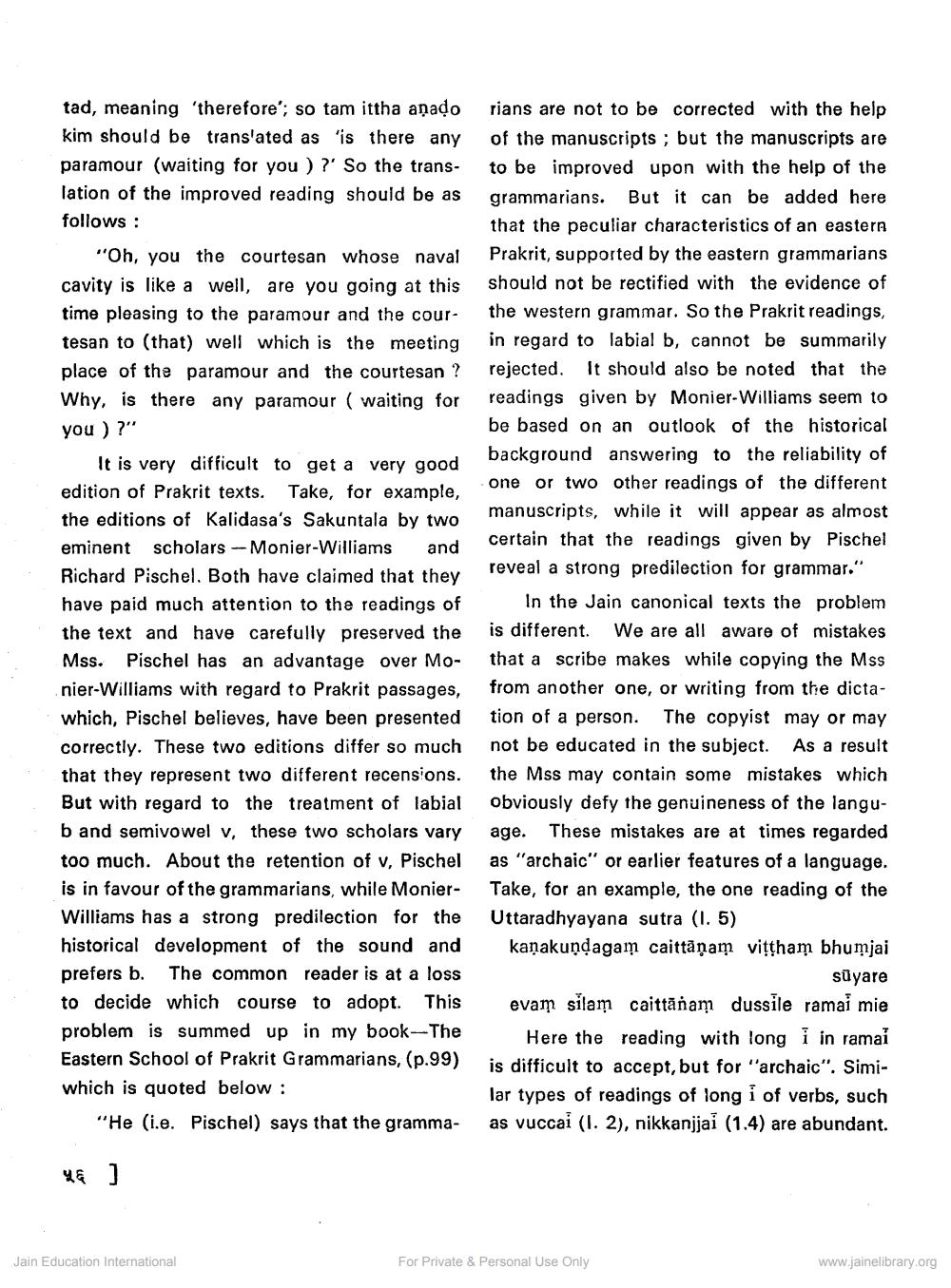________________
tad, meaning 'therefore'; so tam ittha anado kim should be translated as 'is there any paramour (waiting for you)?' So the translation of the improved reading should be as follows:
"Oh, you the courtesan whose naval cavity is like a well, are you going at this time pleasing to the paramour and the courtesan to (that) well which is the meeting. place of the paramour and the courtesan ? Why, is there any paramour (waiting for you)?"
It is very difficult to get a very good edition of Prakrit texts. Take, for example, the editions of Kalidasa's Sakuntala by two eminent scholars - Monier-Williams and Richard Pischel. Both have claimed that they have paid much attention to the readings of the text and have carefully preserved the Mss. Pischel has an advantage over Monier-Williams with regard to Prakrit passages, which, Pischel believes, have been presented correctly. These two editions differ so much that they represent two different recensions. But with regard to the treatment of labial b and semivowel v, these two scholars vary too much. About the retention of v, Pischel is in favour of the grammarians, while MonierWilliams has a strong predilection for the historical development of the sound and prefers b. The common reader is at a loss to decide which course to adopt. This problem is summed up in my book-The Eastern School of Prakrit Grammarians, (p.99) which is quoted below:
"He (i.e. Pischel) says that the gramma
설득]
Jain Education International
rians are not to be corrected with the help of the manuscripts; but the manuscripts are to be improved upon with the help of the grammarians. But it can be added here that the peculiar characteristics of an eastern Prakrit, supported by the eastern grammarians should not be rectified with the evidence of the western grammar. So the Prakrit readings, in regard to labial b, cannot be summarily rejected. It should also be noted that the readings given by Monier-Williams seem to be based on an outlook of the historical background answering to the reliability of
or two other readings of the different manuscripts, while it will appear as almost certain that the readings given by Pischel reveal a strong predilection for grammar."
In the Jain canonical texts the problem is different. We are all aware of mistakes that a scribe makes while copying the Mss from another one, or writing from the dictation of a person. The copyist may or may not be educated in the subject. As a result the Mss may contain some mistakes which obviously defy the genuineness of the language. These mistakes are at times regarded as "archaic" or earlier features of a language. Take, for an example, the one reading of the Uttaradhyayana sutra (1.5) kanakundagam caittapam vittham bhumjai süyare evam silam caittaham dussile ramai mie
Here the reading with longi in ramai is difficult to accept, but for "archaic". Similar types of readings of long i of verbs, such as vuccai (1.2), nikkanjjai (1.4) are abundant.
For Private & Personal Use Only
www.jainelibrary.org




